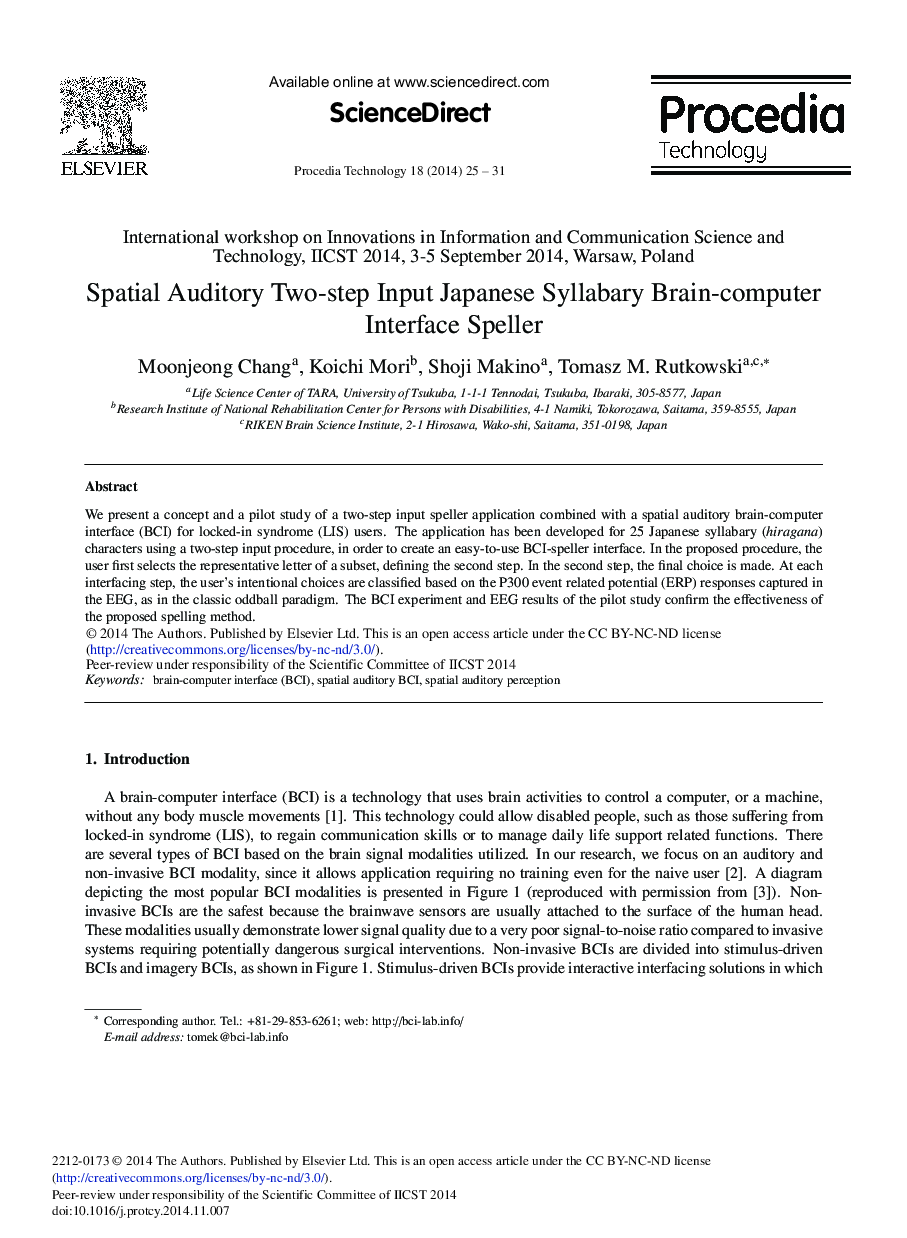| Article ID | Journal | Published Year | Pages | File Type |
|---|---|---|---|---|
| 492641 | Procedia Technology | 2014 | 7 Pages |
We present a concept and a pilot study of a two-step input speller application combined with a spatial auditory brain-computer interface (BCI) for locked-in syndrome (LIS) users. The application has been developed for 25 Japanese syllabary (hiragana) characters using a two-step input procedure, in order to create an easy-to-use BCI-speller interface. In the proposed procedure, the user first selects the representative letter of a subset, defining the second step. In the second step, the final choice is made. At each interfacing step, the user's intentional choices are classified based on the P300 event related potential (ERP) responses captured in the EEG, as in the classic oddball paradigm. The BCI experiment and EEG results of the pilot study confirm the effectiveness of the proposed spelling method.
